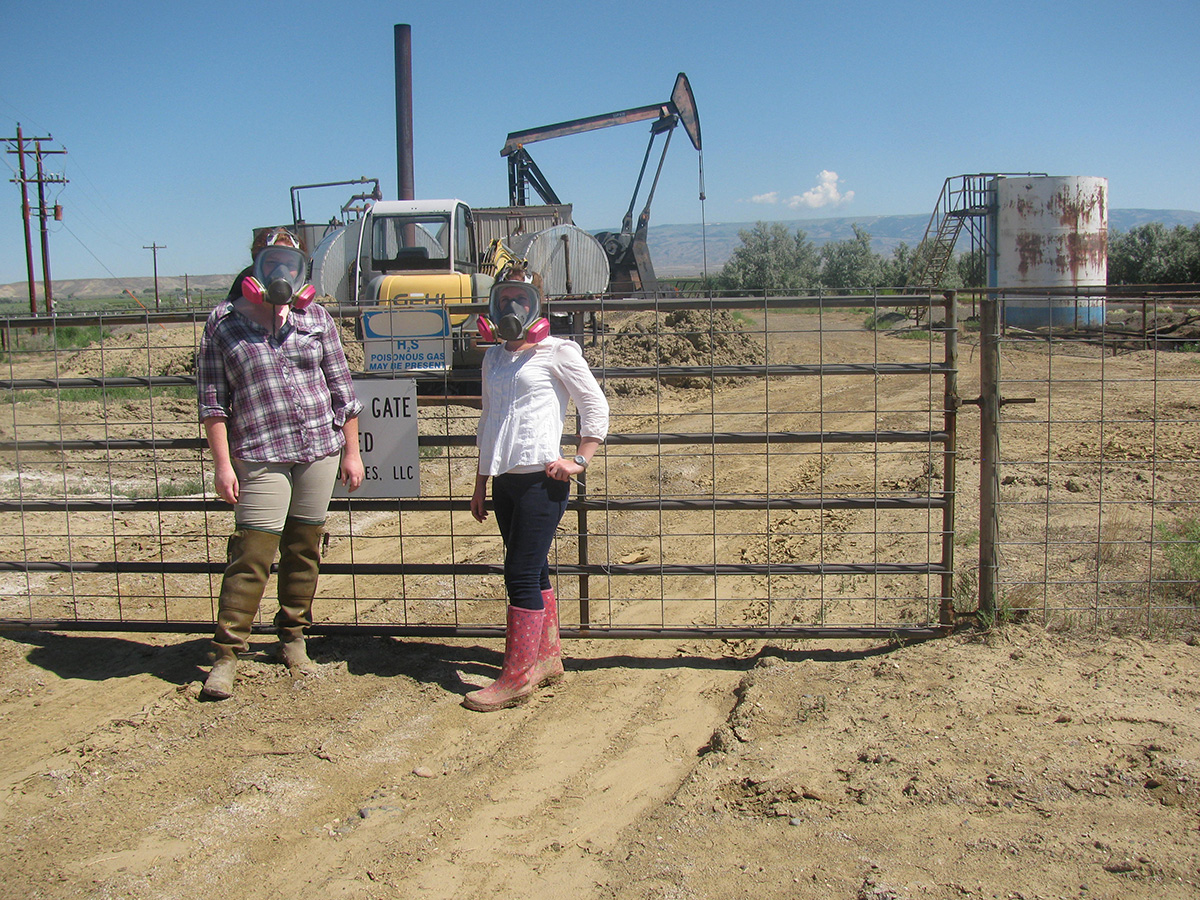High Levels of Toxins Found in Bodies of People Living Near Fracking Sites

Many of the toxic chemicals escaping from fracking and natural gas processing sites and storage facilities may be present in much higher concentrations in the bodies of people living or working near such sites, new research has shown.
The study found traces of volatile organic compounds such as benzene and toluene are linked to chronic diseases like cancer and reproductive and developmental disorders.
In a first-of-its-kind study combining air-monitoring methods with new biomonitoring techniques, researchers detected volatile organic compounds (VOCs) released from natural gas operations in Pavillion, Wyoming in the bodies of nearby residents at levels that were as much as 10 times that of the national averages.

Photo by courtesy of Coming Clean
Some of these VOCs such as benzene and toluene are linked to chronic diseases like cancer and reproductive and developmental disorders. Others are associated with respiratory problems, headaches, nosebleeds, and skin rashes.
“Many of those chemicals were present in the participants’ bodies at concentrations far exceeding background averages in the US population,” notes the study, titled “When the Wind Blows: Tracking Toxic Chemicals in Gas Fields and Impacted Communities,” which was released last week.
Some residents of Pavillion have for years been concerned about the rise in health issues that they suspected were connected to emissions from the gas production activities. This tiny town of less than 250 people has been at the center of the growing debate on fracking since 2008 when locals began complaining that their drinking water had acquired a foul taste and odor back in 2008.
In 2014, air monitoring data showed some toxic chemical emissions at oil and gas sites in Wyoming were up to 7,000 times the “safe” levels set by US federal environmental and health agencies. In March of this year, Stanford University researchers found evidence that fracking operations near Pavillion were contaminating the local groundwater.
Now this new study, conducted by researchers with the national environmental health organization Coming Clean, establishes clearly that at least some of these harmful chemicals are making their way into the bodies of nearby residents.
The study focused on measuring ambient levels of a specific family of VOCs named BTEX chemicals — which include benzene, toluene, ethylbenzene, and xylenes — because these chemicals are known to be hazardous to human health even at low levels. Researchers then used new biomonitoring methods to detect these chemicals in 11 local residents who volunteered to participate in the study by wearing air quality monitors and providing blood and urine samples, and found evidence of eight hazardous chemicals emitted from Pavillion gas infrastructure in the urine of study participants.
“The biomonitoring confirmed what we knew,” Wilma Subra, an award-winning biochemist and one of the scientists involved in the project, told Earth Island Journal. “This clearly indicates that there is a need of control mechanisms to curb the emissions in order to reduce exposure of those living near these operations.”
The study leaders, however, also note that because VOCs are so ubiquitous in products and in our homes, it is possible that some of the VOCs detected in participants’ bodies came from multiple sources. They are calling for further biomonitoring testing of people living or working near oil and gas sites to better understand how these chemicals travel through the environment and to prevent our exposure to them.
“If your drinking water is contaminated with toxic chemicals you might be able to make do with another source, but if your air is toxic you can’t choose to breathe somewhere else,” Deb Thomas, the director of ShaleTest and one the study leaders, said in a statement.
Maureen Nandini Mitra, Editor, Earth Island Journal. In addition to her work at the Journal, Maureen writes for several other magazines and online publications in the US and India. A journalism graduate from Columbia University, her work has appeared in the San Francisco Public Press, The New Internationalist, Sueddeutsche Zeitung, The Caravan and Down to Earth.

